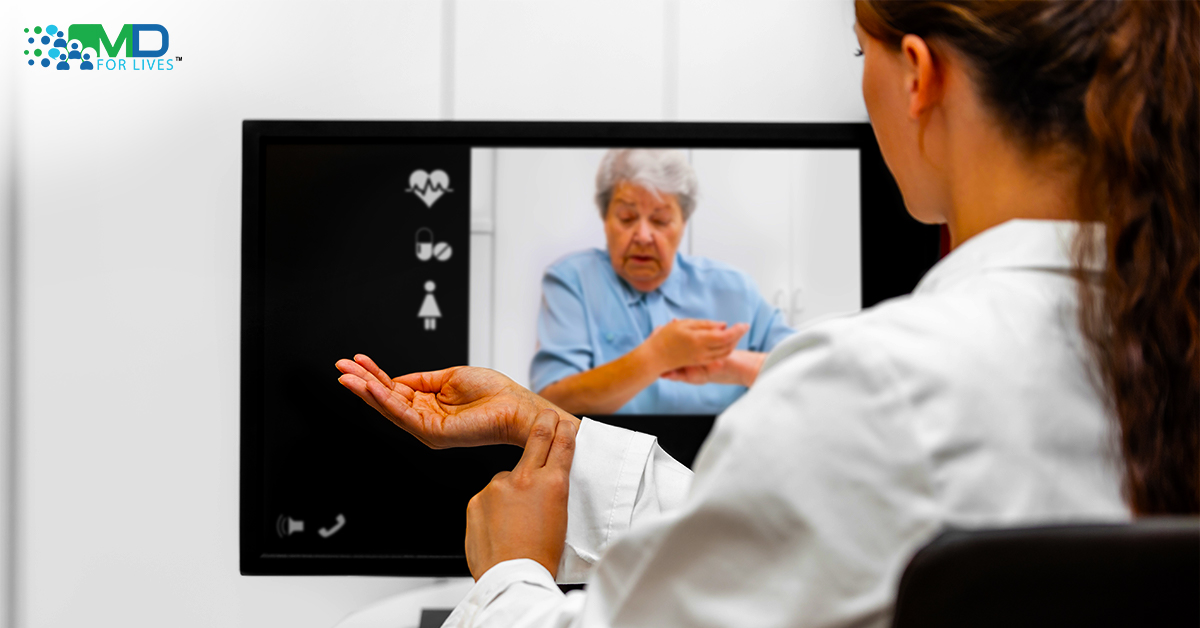As we usher in the new normal phase, innovations to healthcare and every other basic aspect of society begin to emerge. Telemedicine, defined by the World Health Organization as “healing from a distance,” addresses the need for medical attention with consideration to social distancing. Doctors can now assess their patients’ symptoms, make diagnoses, and prescribe common medications without leaving their homes.
During the quarantine period worldwide, the use of telemedicine has been essential for treating familiar illnesses such as allergies, diarrhea, the common cold, and dermatological concerns. More than 50 health systems in the United States have utilized telemedicine approaches, including the “forward triage” or preliminary sorting of patients based on the urgency of their ailments.
With the help of home medical devices, patients can easily take their own blood pressure, blood sugar, weight, and temperature. In more developed countries, telemedicine has been established as a means of monitoring critical patients, thus making check-ups and follow-ups more convenient. Though many symptoms can still go undeclared, telemedicine offers a convenient and safe alternative to face-to-face doctor’s appointments. However, many still have doubts about its effectiveness and sustainability.
Telemedicine Applications in Healthcare
Telemedicine offers several advantages for both patients and physicians, such as reduced exposure, efficient data recording, convenient follow-ups, and flexible clinic hours. More advanced platforms in telemedicine have shown promise in the remote monitoring of patients. These projects in France and several developed countries, known as the E-care project, have emerged from observing the effectiveness of home monitoring in patients with chronic heart failure.
Home monitors are set to take patients’ vital signs and assess symptoms for any warning signs. Assessment of the monitoring platform showed high sensitivity to cardiac decompensation, with the warning alerts preceding cardiac events up to five days in advance. Age and frailty did not seem to be an issue as patients as high as 80 years in age were able to utilize the platform with no difficulty.
Health care professionals are more equipped to monitor and contact patients’ progress through the use of electronic communication. In an observational study on post-liver transplant recipients, researchers used recorded educational programs and home monitoring tools to deliver postoperative instructions and to assess the patient’s vital signs. A comprehensive literature review of telemedicine in liver disease describes the use of video conferencing in the monitoring of people with hepatitis C. The study revealed that while virologic response rates were similar or equal with patients receiving traditional face-to-face clinical care, medication discontinuation rates were lower and patients reported lower symptoms of depression and anxiety.
The use of telemedicine in rural and other remote settings may also have an advantage over in-patient visits. Correctional facilities, for instance, often lack suitable mental health resources. Though technological details such as equipment and stable wireless connections need to be addressed, telemedicine shows a possibility for addressing various issues in global healthcare. In the urban setting, it may also have applications for mental health in those patients who are hesitant in addressing mental health issues may do so discreetly. In these circumstances, special apparatus is not needed for consultation.
Limitations to Future Implementation
Significant disadvantages still exist for telemedicine as advances in technology are still incapable of perfect implementation. In the field of dermatology, e-triage presents the difficulty of accurate diagnosis. In a 2018 study, researchers assessed 44 patients for skin complaints. Results showed 82% diagnostic accuracy and 85% treatment efficacy compared to face-to-face consultations. Challenges for diagnosis included poor image quality, the need for additional tests such as biopsies, and the absence of tactile diagnostic procedures.
The United States of America and Germany are actively transforming their national healthcare to incorporate telemedicine. However, others, including Japan, South Korea, and some European countries, are stuck in a “technology inertia” despite their capacity to develop scientific advances. Integrating technology into traditional health care methods requires resources that are scarce in developing countries. However, the economic slowdown brought about by the COVID-19 pandemic is likely to hinder significant progress for telemedicine, especially in developing countries.
Other limitations regarding telemedicine, such as privacy concerns, are common to other sectors of business. Health care providers must ensure that their connections are secure, or else they risk ruining their reputations in the event of information leaks and identity theft. Regulatory and reimbursement barriers also present a challenge. Though regulations differ for each country, laws will require proper registration and regulation of telemedicine providers to ensure the safety of the patients. Government subsidy programs and insurance policies should also incorporate the reimbursement of certain telemedicine procedures in order for it to be an effective tool in improving the health of the general public.
In the United States, Medicaid defines telemedicine as a “two-way, real-time interactive communication between the patient, physician, or other practitioners” and dictates that it is an alternative to traditional medical care (medicaid). Reimbursement is granted for limited telemedicine procedures, but it is not yet recognized as a distinct service.
Telemedicine cannot yet completely replace traditional face-to-face doctor and patient interactions. Difficulties in developing medical technology may lead to further disparities in the provision of health care for developed and developing countries. Still, this pandemic proves that the role of telemedicine in ensuring accessible healthcare cannot be undermined. Technology must adapt to the demands of evolving healthcare, as should health care practitioners. Future developments may not only be aimed at reducing clinic visits but may also keep patients alert regarding their personal health.







